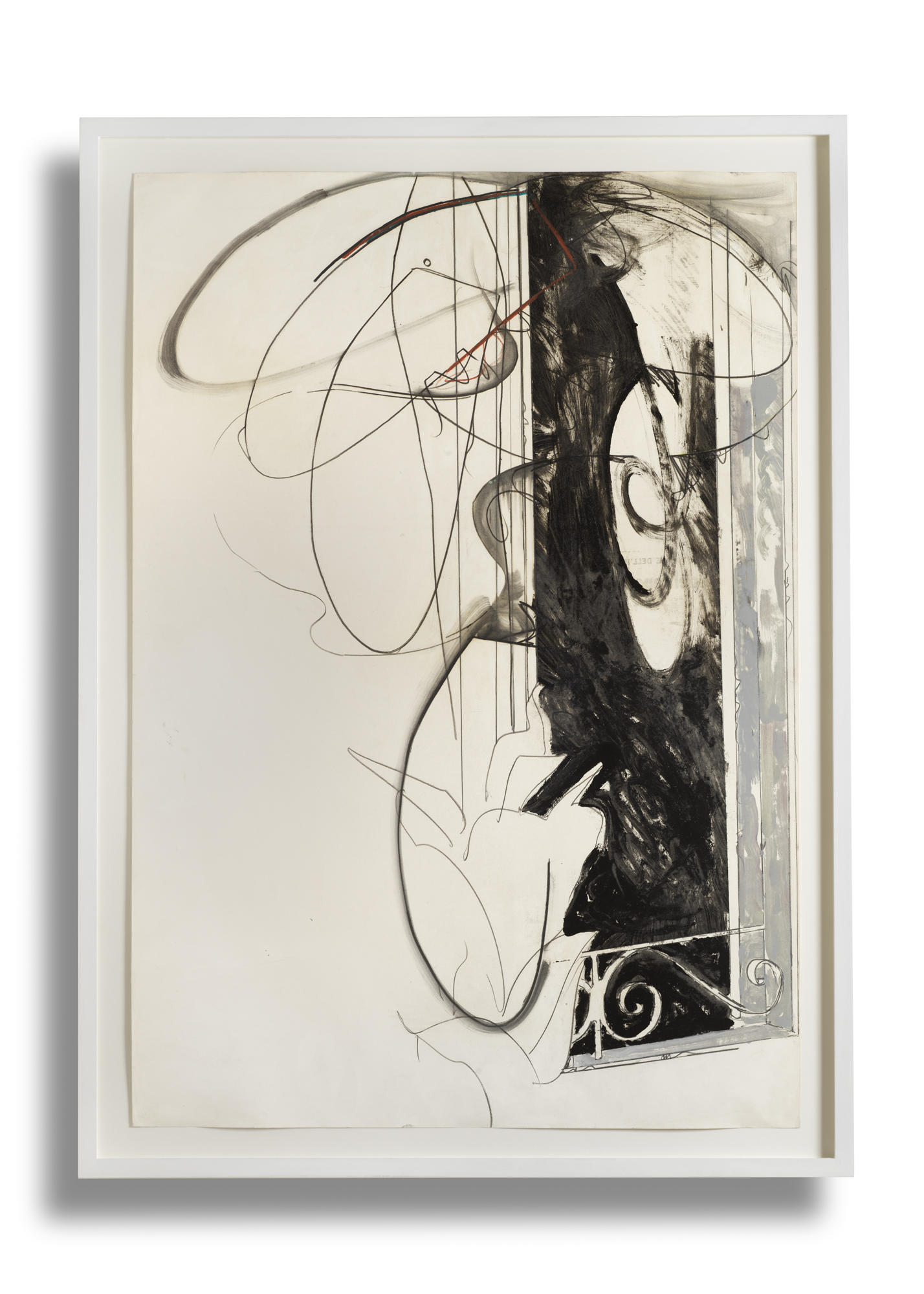Mario Schifano
b. 1934, Khoms, Libya
d. 1998, Rome, Italy
Untitled
1966
Enamel and pencil on paper
100 x 70 cm (39 3/8 x 27 1/2 in.)
Provenance
Literature
Description
Born in 1934 in Libya, Mario Schifano was a postmodern Italian painter and collagist as well as a renowned film-maker and rock musician. He is considered to be one of the most significant and pre-eminent artists of Italian postmodernism. In the late 1950s Schifano took part in the artistic movement the Scuola di Piazza del Popolo, together with Francesco Lo Savio, Mimmo Rotella, Giuseppe Uncini, Giosetta Fioroni, Tano Festa and Franco Angeli. The group met at the Caffè Rosati, the Roman bar located in Piazza del Popolo and after which they are named. The bar was also often frequented by Pier Paolo Pasolini, Alberto Moravia and Federico Fellini. In 1960 they held a group show at the Galleria La Salita, and in 1961 Schifano won the Lissone Prize for young contemporary painting, as well as holding a solo show at Plinio De Martiis’s Galleria La Tartaruga in Rome.
It was also at the Caffè Rosati that he met his future lover Anita Pallenberg, with whom he made his first trip to New York in 1962. Here he came into contact with Andy Warhol and Gerard Malanga, attending the Factory and the New American Cinema Group. He also participated in the exhibition on the New Realists at the Sidney Janis Gallery, a group show that included most of the young artists involved in the Pop Art and New Realism movements, including Andy Warhol and Roy Lichtenstein. He soon became part of the New York social scene, where he first experimented with drugs.
On his return from New York and following exhibitions in Rome, Paris and Milan, in 1964 he took part in the XXXII Esposizione Internazionale d'Arte di Roma. His paintings from this period include Paesaggi Anemici (Anaemic Landscapes), in which nature is represented through stylised and isolated details or allusive writings, nodding to the art of the past in a trend that later led him to create paintings reminiscent of futurism. In 1966–67, after having been part of a band for a year, he decided to devote more energy to his cinematic and artistic activities, at the same time having a brief relationship with Marianne Faithfull, which was heavily featured in the British tabloids.
It was during these years that the present work was conceived. The elegant, curling metalwork and suggestion of a view beyond the sketchily painted window frame harks back to paintings in warm, saturated colours by the French Impressionists. Here, however, there is only a black void beyond the frame, and the window dissolves into swirling lines and blank canvas. In its combination of flat areas of colour, unfinished canvas and also a reference to the history of art, the present work encapsulates Schifano’s unique aesthetic.
Known as a prolific and exuberant artist, he nonetheless struggled with a lifelong drug habit that earned him the label "maledetto", or "cursed"; Schifano died in 1997 of heart-attack aged 64.





